Waco, TX Pollen and Allergy Report for Summer 2023
Pollen Allergy Trends in Waco, TX
When is pollen lowest in Waco, TX?

February
Lowest month total PPM
Avg. PPM
When is pollen highest in Waco, TX?

March
Highest month total PPM
Avg. PPM
How does pollen in Waco, TX compare to Texas?
Waco has a higher average PPM than the state of Texas.
Waco yearly avg PPM:
Texas yearly avg PPM:
How does pollen in Waco, TX compare to the USA?
Waco has a higher average PPM than the USA.
Waco yearly avg PPM:
USA yearly avg PPM:
Is pollen worse this year in Waco, TX?
Spring 2023 was worse than spring 2022.
Spring 2023 PPM:
Spring 2022 PPM:
Average PPM in Waco, TX
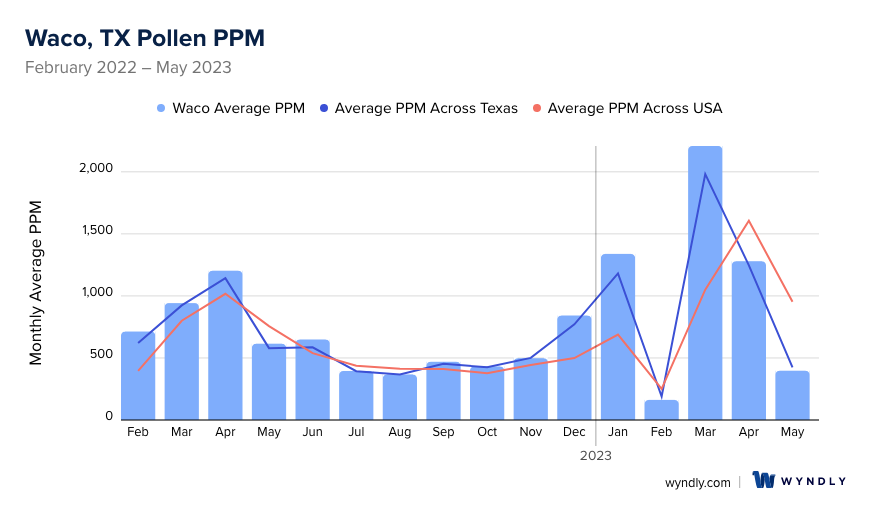
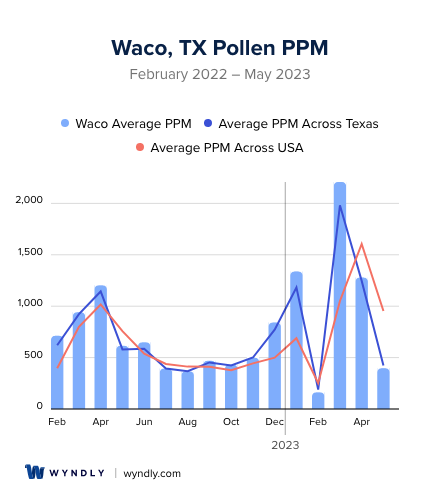
Waco, TX Pollen and Allergy Breakdown by Month
Grass
When is grass pollen highest in Waco, TX?
February has the highest grass pollen in Waco, TX with an average PPM of
When is grass pollen lowest in Waco, TX?
December has the lowest grass pollen in Waco, TX with an average PPM of
Tree
When is tree pollen highest in Waco, TX?
March has the highest tree pollen in Waco, TX with an average PPM of
When is tree pollen lowest in Waco, TX?
July has the lowest tree pollen in Waco, TX with an average PPM of
Weed
When is weed pollen highest in Waco, TX?
December has the highest weed pollen in Waco, TX with an average PPM of
When is weed pollen lowest in Waco, TX?
February has the lowest weed pollen in Waco, TX with an average PPM of
Waco, TX Pollen Monthly Breakdown by Pollen Type
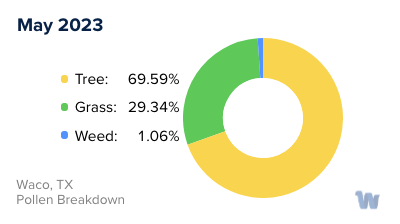
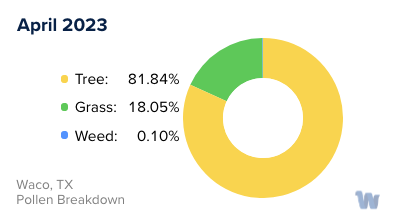

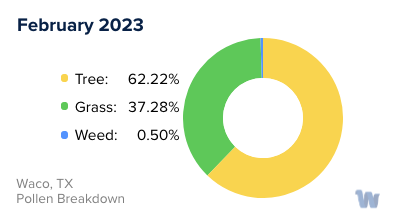
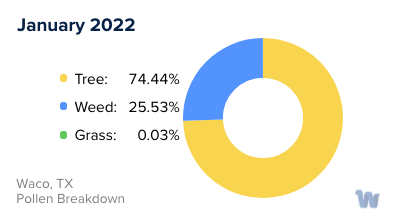
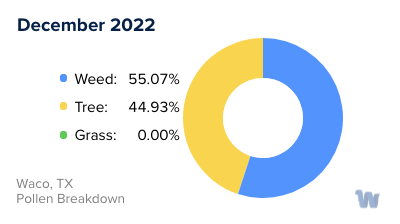
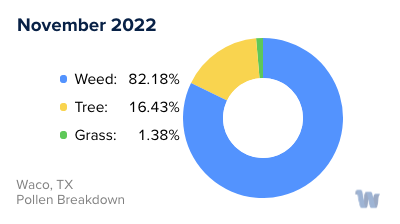
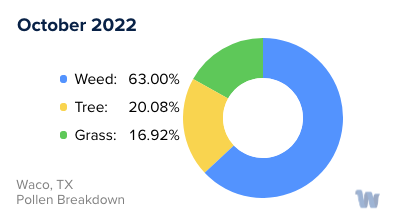
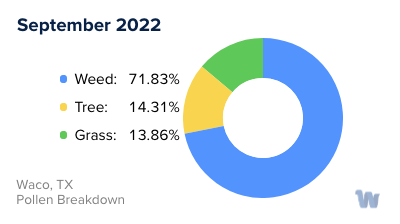
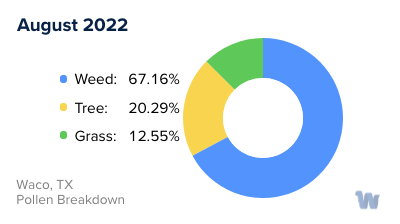
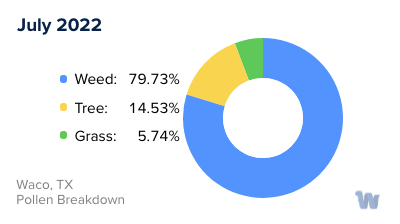
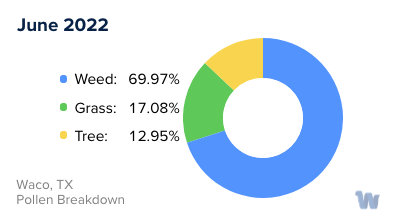
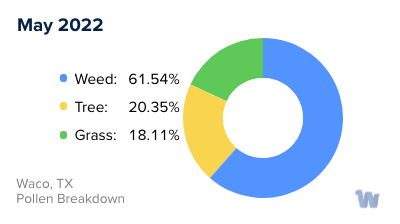
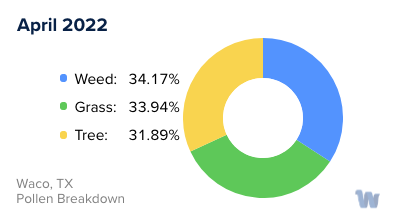
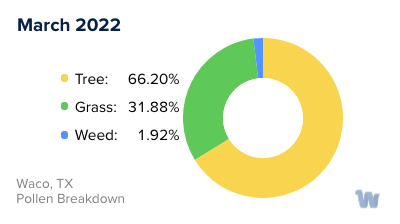
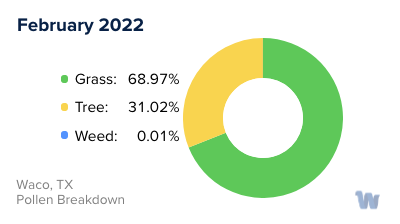
Pollen and Hay Fever in Waco, TX
Nestled in the heart of Texas, Waco is a charming city that boasts an abundance of natural beauty. However, for those with pollen allergies, this idyllic setting can be a double-edged sword, especially during hay fever season.
Pollen allergies, commonly known as hay fever, are the body's response to airborne pollen particles from trees, grasses, and weeds. In Waco, Texas, the types of pollen that are prevalent vary by season.
Springtime in Waco is when tree pollen is at its peak. Oak, cedar, and pine are among the trees that contribute to the high pollen counts. The blossoms and new leaves release pollen into the air, and for those sensitive to tree pollen, this can trigger allergy symptoms like sneezing, runny nose, and itchy eyes.
As spring transitions into summer, grass pollen takes center stage. Bermuda and Johnson grasses are common in Waco and release large amounts of pollen. This period is particularly challenging for individuals who enjoy spending time outdoors, as the grass pollen levels can be quite high, especially on warm, windy days.
In the late summer and early fall, weed pollen, especially from ragweed, becomes the main allergen. Ragweed is notorious for causing hay fever symptoms and thrives in the climate of Waco. The lightweight pollen from ragweed can travel for miles, making it nearly impossible to avoid.
It’s important to note that Waco's weather patterns can also impact pollen levels. For instance, a rainy spring can lead to increased mold spores, which can exacerbate pollen allergies. On the other hand, rainfall can also wash pollen out of the air, providing temporary relief.
Being informed about the types of pollen and the seasons they are most prevalent in Waco, Texas, helps individuals to better understand what triggers their allergies and to plan accordingly for outdoor activities.

